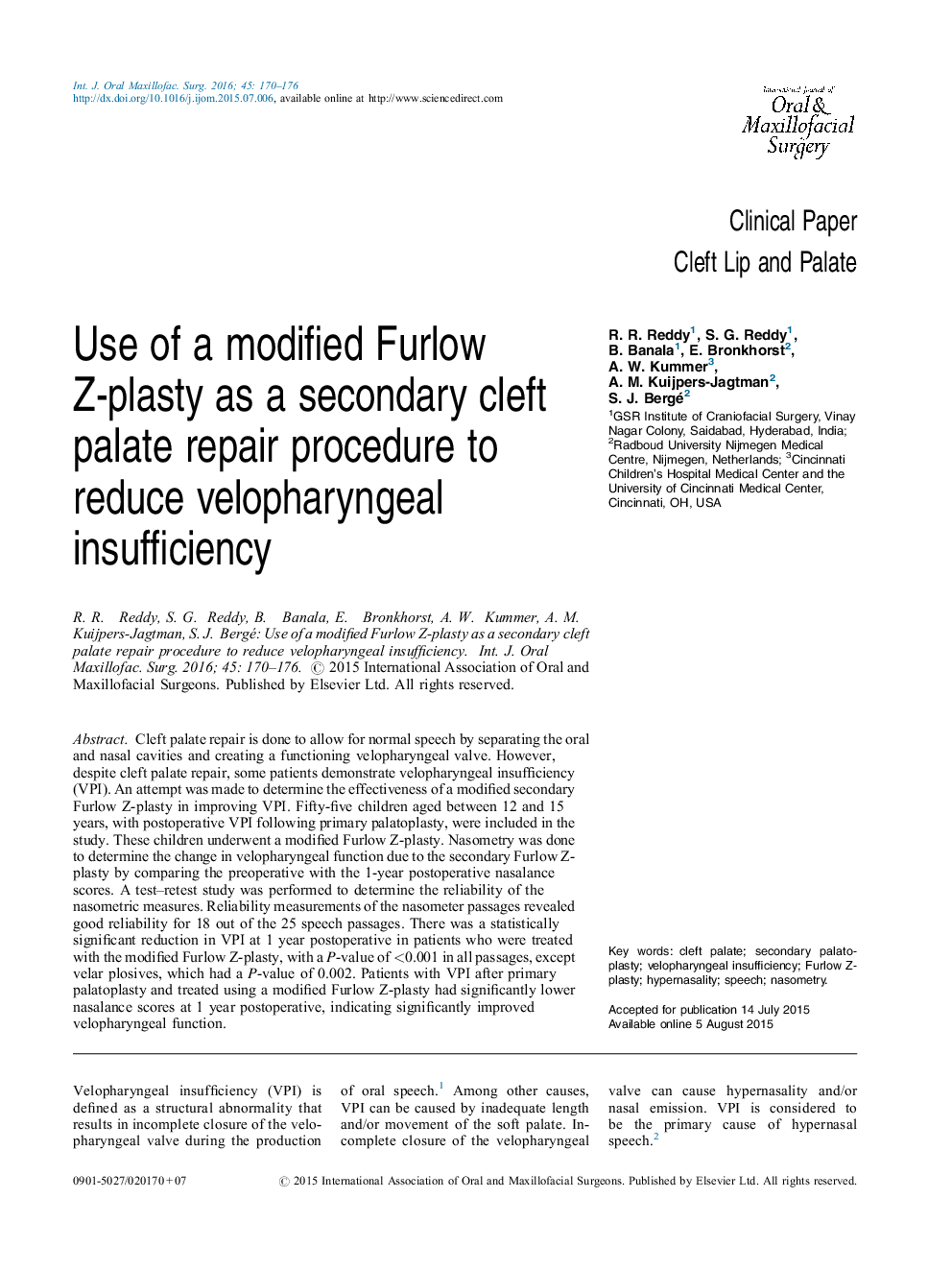| Article ID | Journal | Published Year | Pages | File Type |
|---|---|---|---|---|
| 3131885 | International Journal of Oral and Maxillofacial Surgery | 2016 | 7 Pages |
Cleft palate repair is done to allow for normal speech by separating the oral and nasal cavities and creating a functioning velopharyngeal valve. However, despite cleft palate repair, some patients demonstrate velopharyngeal insufficiency (VPI). An attempt was made to determine the effectiveness of a modified secondary Furlow Z-plasty in improving VPI. Fifty-five children aged between 12 and 15 years, with postoperative VPI following primary palatoplasty, were included in the study. These children underwent a modified Furlow Z-plasty. Nasometry was done to determine the change in velopharyngeal function due to the secondary Furlow Z-plasty by comparing the preoperative with the 1-year postoperative nasalance scores. A test–retest study was performed to determine the reliability of the nasometric measures. Reliability measurements of the nasometer passages revealed good reliability for 18 out of the 25 speech passages. There was a statistically significant reduction in VPI at 1 year postoperative in patients who were treated with the modified Furlow Z-plasty, with a P-value of <0.001 in all passages, except velar plosives, which had a P-value of 0.002. Patients with VPI after primary palatoplasty and treated using a modified Furlow Z-plasty had significantly lower nasalance scores at 1 year postoperative, indicating significantly improved velopharyngeal function.
